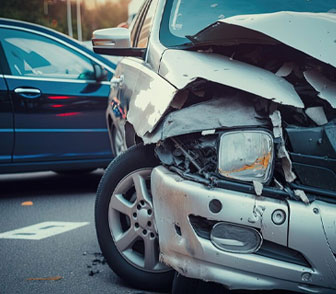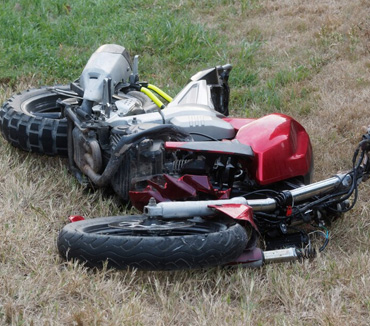Hit-and-Run Accidents: What to Do
Getting in a car accident is stressful enough. But hit-and-run accidents magnify the severity of the incident in a couple of major ways. First of all, the driver is fleeing from their responsibility. Second, they may be the only person nearby who is able to help the victim. If you have been the victim of one of these accidents, you may be experiencing the frustration and helplessness.
Under California State law, you must stop if you crash your vehicle into someone else. Unfortunately, hit-and-run accidents are becoming increasingly common. Beyond the criminal ramifications, if you have been involved in a car accident and the other driver fled the scene of the crash, you may still be able to pursue compensation for your injuries. This is possible if you have a hit-and-run or uninsured motorist claim against your own insurance policy.
As personal injury lawyers, we have spoken with many clients over the years who have found themselves in this situation. We wanted to provide some thoughts on what you should and should not do if you have been the victim of a hit-and-run-accident. As overwhelming as the experience can be, how you react next can play an important role in protecting yourself physically and financially. If you have been involved in a hit-and-run, here are some important details to consider before you leave the scene of the accident.
What is a Hit and Run?
A hit-and-run is a situation in which at least one person involved in a collision leaves without offering aid, sufficient information to the other driver or fails to report the accident to the authorities. This could be with a pedestrian, car or object.
In most states, California included, the act of leaving the scene, whether your at-fault or not, is against the law. And depending on the circumstances could be a misdemeanor or even a felony.
If the other driver cannot be identified, you will likely have to pay for expenses resulting from the crash. If you have full coverage auto insurance or uninsured motorist coverage, then the damages to you and your property may be covered by your policy.
Types of Hit-and-Run Scenarios
A hit-and-run accident happens any time a driver causes (or is involved in) an accident and leaves the scene. There are a few different ways this could occur:
- Driving Hit-and-Run. A car fails to pull over or stop after striking another vehicle. They may even speed away from the scene.
- Parking Lot Hit-and-Run. Sometimes, a driver will damage another person’s vehicle in a parking lot, perhaps while backing in or out of a space. Instead of waiting for the other driver to return to their car or providing contact information, they leave.
- Bicyclist or Pedestrian Hit-and-Run. Unfortunately, some drivers have been known to leave even after seriously injuring a pedestrian or bicyclist with their vehicle.
What to Do in a Hit-and-Run
Like any collision, there are some basic steps you should take at the scene. It is in your best interest to document as much of the accident as possible so that you are better positioned to protect yourself, your passengers and your vehicle.
Here is what to do if you are the victim of a hit-and-run:
- Stay Calm. Any collision can evoke intense emotions including confusion, anger, fear and anxiety. Try to remain calm and collected so you can think and act with a clear head.
- Stay Where You Are. Absolutely do not leave the scene of the accident or attempt to chase down the other driver. Staying put can help you collect valuable evidence while avoiding incurring penalties yourself. Move your car safely off the road and start by checking to see if you or any passengers need medical attention.
- Remember the Details. Try to remember as many details as you can, such as the make and model of the car as well as the license plate number. You may not be able to identify who hit you, but anything you remember can help when you talk to the police or your insurance company.
- Find Witnesses. An accident of any kind will typically draw attention. Once you are safe, see if there are any witnesses to confirm what happened. If possible, get their names and contact information. This will help you solidify your story when you talk to the police.
- Call the Police. Dial 911 and call the police to the scene, especially if someone needs medical attention. The authorities will help investigate the incident and file an accident report.
- Take Photos. While you are getting the details of the incident, taking pictures will help provide evidence of the damage. Take photos from different angles, including a full view of the vehicle and close-ups of any dings and scratches. Do not forget to take pictures of the paint left by the other car, too.
- Contact Your Insurance Company. In any accident, call your insurance agent to see what you should do next. They can walk you through what to do and how to file a claim.
How to Report a Hit and Run
You will want to start by following the steps you would take after any other car accident.
- Pull over and out of the flow of traffic.
- Turn on your hazard lights.
- Take a deep breath and check for injuries.
- If you can get the other driver’s license plate number, do so. If not, do not try to confront the other driver or chase them down.
- Call 911 for police and ambulance if necessary. Note: your insurance policy may require that you notify police within a certain time period after the incident to file a hit-and-run report.
- Stay at the scene of the accident until you have completed the police report.
- If you can do so safely, take pictures of the scene and any damages to your vehicle.
- Get the name and contact info of anyone who witnessed the accident.
- Contact your car insurance company to file a hit-and-run claim.
Why Would a Driver Flee the Scene?
There are several possible explanations for why a driver may speed away from the scene of a crash they have caused or been involved in. For instance, they could be:
- Wanted for other crimes
- Driving under the influence
- Driving a stolen vehicle
- Uninsured or unlicensed
- Having a panic response
While these are possible explanations, they are not excuses. It is never acceptable to leave the scene of a crash.
Will My Insurance Cover a Hit-and-Run?
If police can identify the offending party, their insurance company could help pay for the damages. But many hit-and-run drivers are never identified, which means their liability coverage is not an option.
In the event of a hit-and-run, chances are you will have to file a claim with your insurance company. Whether the accident is covered depends on the coverages in your policy. That is why it is best to make sure you have the protection you need.
While there is no such thing as “hit-and-run insurance,” there are car insurance coverages that can come in handy if you are involved in a hit-and-run accident.
- Uninsured Motorist auto coverage helps pay for your medical and related expenses if you’re in a car accident and the at-fault driver does not have liability insurance or cannot be identified. Some states have laws requiring drivers to include uninsured motorist coverage on their auto insurance policies, other states allow the insured to reject the coverage.
- No-Fault Insurance (or Personal Injury Protection) is required in some states and optional in others. No-fault pays for personal injuries resulting from an auto accident in your covered vehicle, whether the accident was your fault or that of a hit-and-run driver.
- Collision Coverage can help pay for damage to your vehicle if it is hit by someone.
- Medical Payments Coverage can be helpful, too. Because it moves with you, you’re still covered even if you’re involved in a hit a run while riding in a friend’s car or walking along the sidewalk.
Should You Speak with an Attorney?
If you are involved in a in a hit-and-run crash, your first step should always be to call 911 and ask for medical attention. Once you have been properly taken care of, make sure you contact an experienced personal injury attorney for help attaining justice and compensation for your injuries.
Call us now at 1-877-241-9554 to learn more about your options. A free consultation is just a phone call away.
Request A
Free Consultation
Fields Marked With An ” *” Are Required











